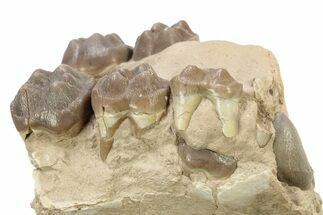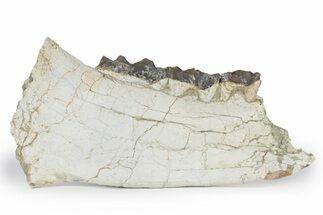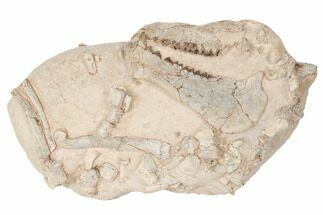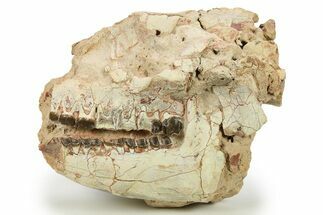This Specimen has been sold.
1.2" Fossil Oligocene Canid (Hesperocyon) Jaws in Situ - Wyoming
This is an upper and lower jaw section of the canid Hesperocyon gregarius that was collected from the Oligocene age White River Formation in Converse County, Wyoming. The jaws contain a total of 9 complete teeth and 3 partial teeth, with an additional tooth/root off to one side of the jaw. This specimen has no repair or restoration and has been meticulously exposed from the rock it was found in.
It comes with an acrylic display stand.
It comes with an acrylic display stand.
Hesperocyon is an extinct genus of the family Canidae. The name Hesperocyon means "Dog from the West" and they resembled modern day foxes. They were small and agile, much like a domestic cat, and lived only in North America. Their bodies were long and flexible, and they had a tail, 42 teeth, inner ears that were enclosed in bone instead of cartilage, and relatively short legs with five toes. Fossil records suggest that Hesperocyon was one of the earliest members of the canid family to appear.
SPECIES
Hesperocyon gregarius
LOCATION
Converse County, Wyoming
FORMATION
White River Formation
SIZE
Longest jaw measurement: 1.2". Entire specimen: 3.4 x 2.9"
ITEM
#197357
We guarantee the authenticity of all of our specimens.
 Reviews
Reviews












